Now that the skies are quiet and we can hear the birds again, let us reflect on the damage that we have done to the planet through the relentless expansion of aviation. The fact that the UK has so many airports, the skies are so crowded, and aviation is still so far away from reducing its greenhouse gas emissions, shows, in environmental matters at least, just how unfit for purpose are our own Civil Aviation Authority and Department for Transport. Heathrow acts as if it is still planning to expand and the CAA are consulting in their consultation CAP1887 as if Heathrow will expand, notwithstanding the Court of Appeal decision and the Covid-19 crisis.
Let us look at two aspects – air quality and climate change:

Air Quality
The effects of aircraft (as opposed to land vehicles going to and from the airport) are not assessed properly by the CAA or the DfT. A huge problem and illegal levels of air pollution are being disguised. As an example, Heathrow state in their DCO Consultation for expansion, apparently with the approval of both the CAA and the DfT, that
“Aircraft flying into and out of the airport do not have a significant effect on air quality in the local area. This is because aircraft are so high that emissions are dispersed before reaching on the ground”[1]
That is manifestly untrue.
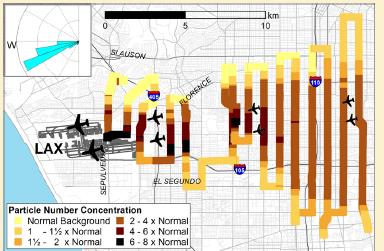
Hudda et al in 2014[2] found that emissions blew downwind from airborne approaching and departing aircraft so that there was detected at least a 2-fold increase in particulate concentrations over baseline concentrations during most hours of the day, in an area of about 60 km2 that extended to 16 km downwind, and a 4 to 5-fold increase to 8–10 km downwind. The synopsis of the report stated that
“These results suggest that airport emissions are a major source of particulate number concentration in Los Angeles that are of the same general magnitude as the entire urban freeway network. They also indicate that the air quality impact areas of major airports may have been seriously underestimated”.
Particulates, which are tiny particles of soot emitted from the combustion process, have been found to be particularly harmful to humans. The Hudda study also showed elevated levels of NO2 downwind from aircraft as well, contradicting evidence of our Department of Transport
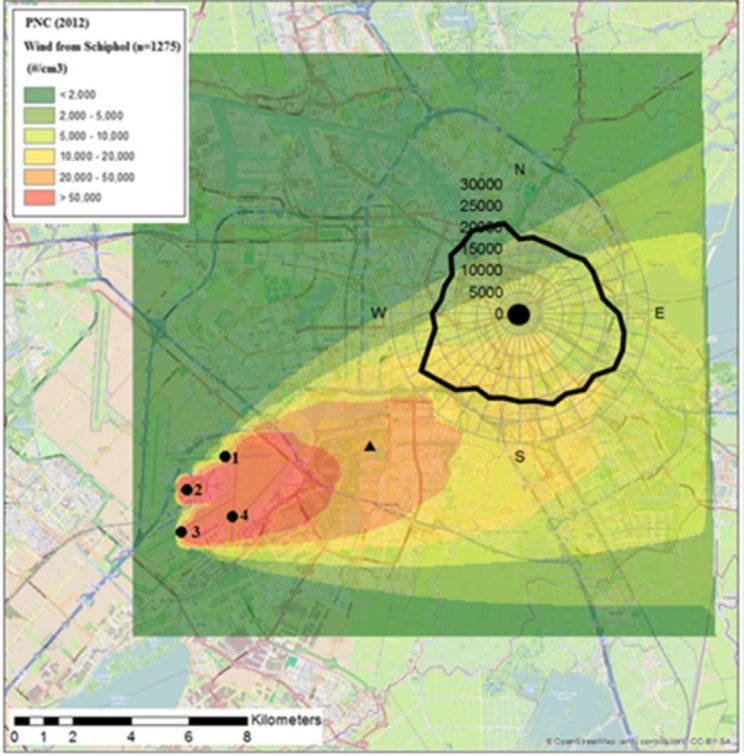
Keuken et al in 2015[3] took measurements at Adamse Bos, located 7 km from Schiphol, Amsterdam, and in 2012 at Cabauw, a regional background site 40 km south of Schiphol. Particulate concentrations increased during periods in which the wind direction was from Schiphol: at Cabauw by 20% and at Adamse Bos by a factor of three, from 14,100 (other wind directions) to 42,000 cm3 between 06.00 and 23.00. The size distribution of Schiphol-related particulate number concentration was dominated by ultrafine particles, ranging from 10 to 20 nano metres
Riley et al in 2016[4] found a similar situation at Hartfield Jackson airport Atlanta.
Hudda[5] in 2018 did another study at Boston finding that jet engine exhaust is a significant source of ultrafine particles, and aviation-related emissions can adversely impact air quality over large areas surrounding airports.
In 2019 Zhou et al[6] in China did a study finding that civil aircraft emissions during landing and take-off are important air pollutant sources, but have been given insufficient attention in China.
In 2019 Austin et al[7] from Washington state university led a study which found that communities underneath and downwind of jets landing at Sea-Tac Airport at Seattle are exposed to a type of ultrafine particle pollution that is distinctly associated with aircraft
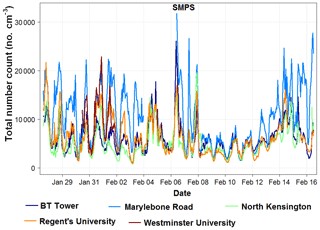 In June 2019 Roy Harrison[8] from Birmingham University led a study of air quality in London scanning particulate sizes in London and found an elevation in nucleation mode particles associated with winds from the west which was concluded to result from emissions from London Heathrow Airport, despite a distance of 22 km from the central London sites
In June 2019 Roy Harrison[8] from Birmingham University led a study of air quality in London scanning particulate sizes in London and found an elevation in nucleation mode particles associated with winds from the west which was concluded to result from emissions from London Heathrow Airport, despite a distance of 22 km from the central London sites
In 2019 Kings College London[9] published a report on ultrafine particles being blown downwind from 4 international airports including London, finding particulates being blown in significant quantities from Heathrow into central London. Their diagram of emission is shown below:

The specialist air quality unit of DEFRA recognises the risk of particulates from aircraft saying in their 2018 report to DEFRA that
“at a location such as Heathrow Airport, where aircraft tend to approach the airport from the east (flying over the London conurbation), there is potential for considerable exposure to UFP [ultrafine particles] from aircraft”.[10]
Heathrow themselves “monitor” air quality around Heathrow (weblink on the right in the image). They have four sites; Harlington, Bath Road (LHR2), Longford and Oaks Road. They are all directly to the north or the south of the runways – none are underneath a flight path. The last annual published results are for year end 2018; they show PM 2.5s at an annual mean of less than 10 micrograms per cubic metre. However, look at the hourly maxima and the level goes up to over 60 micrograms and with Harlington to over 76 micrograms per cubic metre[11]. While expecting hourly maxima to be greater, this level of difference gives a serious indication of the prevailing wind blowing particulates well away from the receptors with only a temporary change of wind blowing them over the receptors when the wind changes. If the receptors were put underneath the flight path, the annual mean results would most likely be very much increased – to an annual mean probably well over 20 micrograms, the permitted amount under the EU Regulation 2008/50 and way above the WHO recommended limit of 10 micrograms. The EU Regulation 2008/50 also provides that there must be a target year on year reduction of PM2.5s. At a level of 20 micrograms per cubic metre the target yearly reduction is 20%. Any operations or alterations that lead to an increase in PM2.5s are unlawful, therefore. At present neither Heathrow, the CAA nor the DfT nor any other government department have tested for emissions under the flight paths of aircraft landing or departing from Heathrow. This is an extraordinary state of affairs.
The devastating effects of fine particulates in the air are all too easy to see from the research carried out. Fine particulates alone kill some 29,000 people in the UK per year[12]. 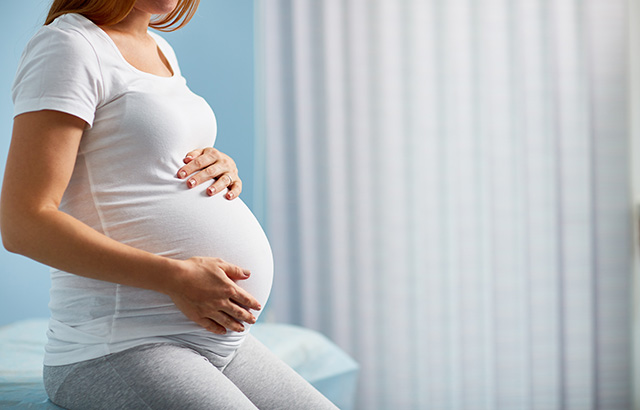 Research at Queen Mary’s University[13] has found that particulates have been present in the placentas of expectant mothers and effect the unborn foetus, thus passing on the effects to the next generation.
Research at Queen Mary’s University[13] has found that particulates have been present in the placentas of expectant mothers and effect the unborn foetus, thus passing on the effects to the next generation.
The University of Bern investigated the effect of exhaust particles from aircraft turbine engines on human lung cells[14] stating
“As a result, scientific research of the particulate matter from air traffic is important for the development of environmental standards in the aviation sector. When inhaled, these nanoparticles — like those from other combustion sources – efficiently deposit in the airways.……..if the inhaled particles manage to overcome these defence mechanisms, due to their structure or physico-chemical properties, there is a danger for irreparable damage to the lung tissue.”
Far from pollution of the air with fine particulates improving, it is reported that Public Health England recorded the fraction of mortality in London due to particulates actually rose from 6.4% to 6.5% from 2016 to 2017 and from 5.6% to 6.4% from 2015 to 2016[15].
Ranzani[16] et al have reported that ambient fine particulate matter air pollution was associated with low bone mineral content and bone mineral density. This is likely to be transferred from one generation to the next where pregnant mothers are exposed to particulates. Professor Mina Gaga, President of the European Respiratory Society has said:
“This new research suggests a possible mechanism of how babies are affected by pollution while being theoretically protected in the womb. This should raise awareness amongst clinicians and the public regarding the harmful effects of air pollution in pregnant women. We need stricter policies for cleaner air to reduce the impact of pollution on health worldwide because we are already seeing a new population of young adults with health issues.”[17]
It is abundantly clear that neither Heathrow, the CAA, nor the Department of Transport have even scratched the surface of researching the health effects of expanded Heathrow operations. This not only includes a third runway but includes any airspace change that will lead to an increase in the number of flights in and out of the airport.
Climate Change
Most of scientific opinion is that man made climate change is extremely harmful. Some argue in US President Trump style that as man-made CO2 only accounts for less than 1% of global CO2 emissions, we do not have a climate change problem that is man-made.
The hypothesis goes that the oceans contain some 37,400 billion tons of suspended carbon, land biomass has 2000-3000 billion tons, 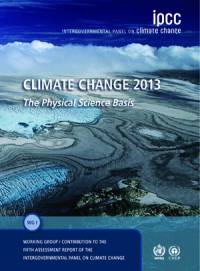 the atmosphere contains 720 billion tons of CO2 and humans contribute only 6 billion tons additional load on this balance – human proportion around 0.015% of global CO2 emissions. Therefore no human problem? Well not exactly, since the natural CO2 is absorbed into the oceans and land. A small man-made rise radically alters the eco-system and causes the climate to alter. A report from the IPCC (weblink to the right – careful about downloading the full report as this is a very large document) in 2013 discusses the effects of man-made CO2[18]
the atmosphere contains 720 billion tons of CO2 and humans contribute only 6 billion tons additional load on this balance – human proportion around 0.015% of global CO2 emissions. Therefore no human problem? Well not exactly, since the natural CO2 is absorbed into the oceans and land. A small man-made rise radically alters the eco-system and causes the climate to alter. A report from the IPCC (weblink to the right – careful about downloading the full report as this is a very large document) in 2013 discusses the effects of man-made CO2[18]
The IPCC diagram of global warming shows substantial warming throughout the World and the IPCC conclude that  “It is extremely likely that more than half of the observed increase in global average surface temperature from 1951 to 2010 was caused by the anthropogenic increase in greenhouse gas concentrations and other anthropogenic forcings together. The best estimate of the human-induced contribution to warming is similar to the observed warming over this
“It is extremely likely that more than half of the observed increase in global average surface temperature from 1951 to 2010 was caused by the anthropogenic increase in greenhouse gas concentrations and other anthropogenic forcings together. The best estimate of the human-induced contribution to warming is similar to the observed warming over this
period”.
The Committee on Climate Change and others have written much on the requirements to reduce the combustion of fossil fuels in order to reduce the emission of greenhouse gases, the most notable one being carbon dioxide (CO2).
Heathrow claims that it will be “carbon neutral” by 2050 but then in the small print we realise that 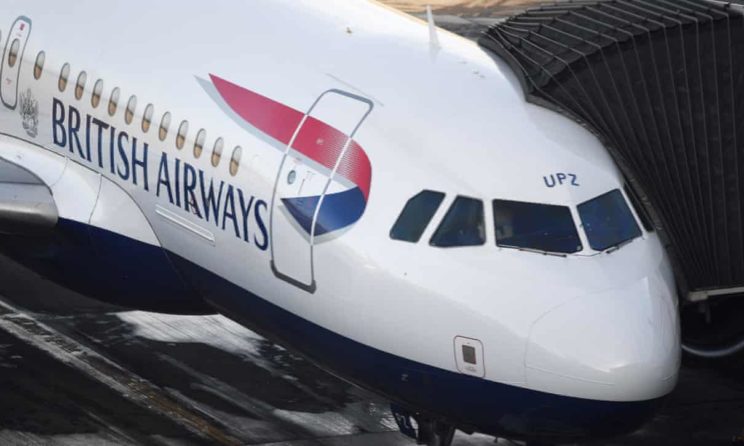 the statement excludes all aircraft operations (see their strategy called “Leading the Way” at https://www.heathrow.com/Our-Carbon-Strategy/leading-the-way). Airlines are sufficiently worried to say that they will be carbon neutral by 2050. Greenpeace has dismissed the move as “greenwash”. John Sauven, its UK executive director, said: “This whole strategy is a flight of fancy. Carbon offsetting is simply an excuse to carry on with business as usual while shifting the responsibility to cut emissions to someone else, somewhere else, and some other time”. [19].
the statement excludes all aircraft operations (see their strategy called “Leading the Way” at https://www.heathrow.com/Our-Carbon-Strategy/leading-the-way). Airlines are sufficiently worried to say that they will be carbon neutral by 2050. Greenpeace has dismissed the move as “greenwash”. John Sauven, its UK executive director, said: “This whole strategy is a flight of fancy. Carbon offsetting is simply an excuse to carry on with business as usual while shifting the responsibility to cut emissions to someone else, somewhere else, and some other time”. [19].
Any increase in aviation operations depends on substantial offsetting, which is something that the Committee on Climate Change (“CCC”) have specifically advised against[20]. Lord Deben, the chair of the CCC has specifically advised the Government on behalf of the CCC that expansion of Heathrow leaves very little room for expansion of any other airport[21]. The problems of offsetting have been recited many times before by many people. There is no guarantee that the program of capture (e.g. tree planting) will be completed. The carbon capture may well be required for other activities (e.g. offsetting emissions generated for power supplies). The carbon capture occurs over some 30 to 50 years whereas the emissions from aviation occur in one flight. The plants, peat bogs, trees might become damaged (they could burn down or die or be cut down). In the event that they are damaged, they become carbon emitters causing more damage as they emit the carbon that they have captured over the years.
Looking at the proposed expansion of Heathrow, no assessment of how Heathrow operations compare to national aviation emissions, either expanded or not, has been made, notwithstanding that Parliament has declared a state of climate change emergency. In support of its stance in the DCO consultation, Heathrow stated that it had followed advice from the Committee on Climate Change (“CCC”) given in 2017. That advice is way out of date, and the current advice is contained in the CCC Net Zero Report of May 2019. Following that, the CCC has reported to Parliament and advised on aviation (footnotes 19 and 20).
The projected CO2 emissions, stated in the Heathrow Consultation Chapter 9 PEIR Volume 1[22], for departing Heathrow planes are 20 MtCO2 in 2021 and by 2050, having peaked at over 25 MtCO2 per year in intermediate years. Current Total Air Traffic Movements (ATMs) throughout the year in the UK are 2,500,000 approx. Heathrow ATMs per year (now) are 480,000. Therefore, Heathrow’s proportion of ATMs of the whole nation is 19.05%.
The Committee on Climate Change agreed that the previous target 80% reduction overall required aviation CO2 emissions to be 37.5 MtCO2 by 2050 (which is 100% of the 2005 total). The proportion of Heathrow CO2 emissions to the target by 2050 was therefore 20MtCO2 ÷ 37.5MtCO2 = 53.33% of the total CO2 UK aviation emissions budget.
53.33% is considerably more than 19.05%. Therefore, Heathrow already (before expansion) has very substantially more than its share of the CO2 budget – indeed it will have over half of the budget even though it currently has less than one quarter of the UK air traffic movements. Although Heathrow has more long-haul flights departing, so needs an extra proportion of the CO2 budget, no calculations have been given on what that proportion should be or how it is justified in the light of ATMs of other airports (which also have declared expansion plans).
With a “Net Zero” target by 2050 aviation CO2 emissions need to be down to 30 MtCO2. 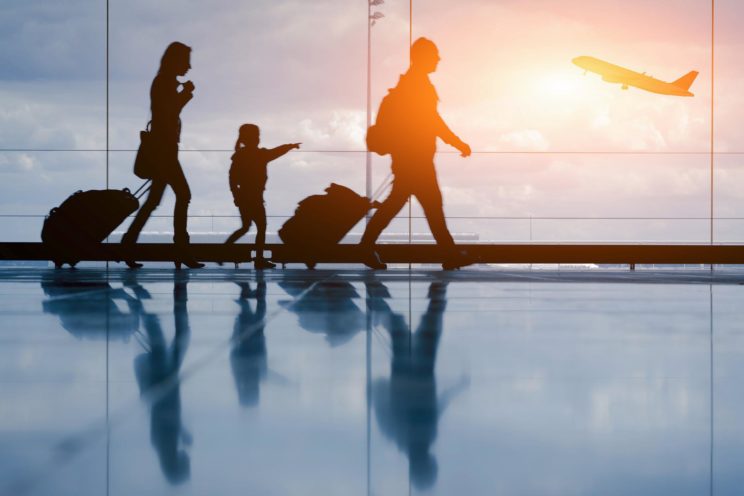 Details of this are in the Net Zero report and technical report of May 2019 from the Committee on Climate Change. We know from the report of the Department for Transport entitled “Beyond the Horizon” of June 2018 that predicted CO2 is likely to be 40.8 MtCO2 in 2050 having peaked at 43.4 MtCO2 in 2030 (table 2 page 5 on weblink on the right). Thus, aviation, with Heathrow expansion, will fail even on an 80% reduction over 1990 values – never mind a 100% reduction (or the effects of any non CO2 greenhouse gases). Any reduction from 40.8 MtCO2 in 2050 is highly speculative, if aviation is allowed to expand.
Details of this are in the Net Zero report and technical report of May 2019 from the Committee on Climate Change. We know from the report of the Department for Transport entitled “Beyond the Horizon” of June 2018 that predicted CO2 is likely to be 40.8 MtCO2 in 2050 having peaked at 43.4 MtCO2 in 2030 (table 2 page 5 on weblink on the right). Thus, aviation, with Heathrow expansion, will fail even on an 80% reduction over 1990 values – never mind a 100% reduction (or the effects of any non CO2 greenhouse gases). Any reduction from 40.8 MtCO2 in 2050 is highly speculative, if aviation is allowed to expand.
CORSIA will not be an acceptable off-set. Firstly, mitigation (apart from carbon trading) will yield nothing like the required off-set. Trading, by getting poor nations to sell carbon credits and restrict their economic growth will not be acceptable in the long term. The CCC has specifically said that this practice should be banned and the Government (against the advice of the CCC) has stated that it will only be permitted temporarily.
Off-setting by carbon capture, such as peat bogs and tree planting, should be available for industry and activities as a whole. It cannot be monopolised by just one industry such as aviation, which already enjoys more climate change and tax concessions or exemptions than any other industry. Off-setting also has its own very serious credibility problems. Off-set an aircraft journey with tree planting or bog creation, and the carbon capture takes 30 years to complete versus the 10 or so hours air travel journey. More carbon emitting journeys get made before the carbon capture operates and it goes on. Disturb the peat bog, burn down the trees or wood in the next 30 years (even dead branches converted into pellets for eco-friendly biomass boilers emit CO2), and the carbon capture operations become carbon emitters. Off-setting is highly speculative and most likely will not produce the intended off-setting at all.
 Aviation causes particular damage by contribution to climate change. Not only are there the traditional greenhouses gases like CO2, but other gases when emitted at high altitude, cause a greenhouse effect and contribute to the warming of the planet. One of the most notable is water, which exists in the jet engine exhaust. Condensation occurs and droplets form to act as magnifying glasses for the heat. Water vapour disperses relatively rapidly and certainly more quickly than CO2, but it is continually replenished from jet engine exhausts. The estimate is that the non-CO2 emissions from aircraft double the greenhouse effect of aircraft over just CO2 alone[23].
Aviation causes particular damage by contribution to climate change. Not only are there the traditional greenhouses gases like CO2, but other gases when emitted at high altitude, cause a greenhouse effect and contribute to the warming of the planet. One of the most notable is water, which exists in the jet engine exhaust. Condensation occurs and droplets form to act as magnifying glasses for the heat. Water vapour disperses relatively rapidly and certainly more quickly than CO2, but it is continually replenished from jet engine exhausts. The estimate is that the non-CO2 emissions from aircraft double the greenhouse effect of aircraft over just CO2 alone[23].
Heathrow has suggested “Sustainable Fuels” on numerous occasions. In December 2019, the BBC said of John Holland Kaye, the CEO, “He said synthetic fuels were the way forward. “It has been around for about 100 years and is becoming more affordable. It needs a real push on investment.” However that has had the thumbs down from the Committee on Climate Change as a get out of jail card, who in their letter to the Secretary of State of the 24th September 2019 stated:
“Sustainable biofuels. Some deployment of sustainable biofuels is likely to be appropriate in aviation (e.g. up to 10% of fuel use in 2050), but higher levels of uptake should be not planned for given competing alternative uses. Development of a UK market for aviation biofuels could be supported by achieving more of the 2030 Renewable Transport Fuel Obligation target through aviation fuels, subject to strong sustainability criteria being put in place. Aviation biofuels will need to be produced with CCS to be competitive against alternative uses of biomass.
Synthetic fuels. Synthetic fuels should not be a priority for government policy, but if the aviation industry wants to pursue them it should focus on demonstrating that these fuels, used in aviation, would be genuinely low-carbon, and could become cost-competitive and scalable in a global market.”
Managing demand. Measures should be put in place to limit growth in demand to at most 25% above current levels by 2050.
Airport capacity. The Government should assess its airport capacity strategy in the context of net zero. Current planned additional airport capacity in London, including the third runway at Heathrow, is likely to leave at most very limited room for growth at non-London airports.
Electric aircraft are not expected to become operational to any great extent until well after 2050 – after the date by which we need to become net zero. Heathrow Airport through its director of sustainability, supported a paper entitled “The Flight to Net Zero” published by Green Alliance[24] in which they state that “Notably, reducing the number of flights is the only way to address the significant non-CO2 climate impacts of aviation, such as contrail formation and NOx emissions. These are estimated to cause as much atmospheric heating as the CO2 emissions, and are not currently accounted for” [page 19].
The CCC have specifically advised that offsetting will not be possible if we are to achieve net zero by 2050[25] and yet the industry still pretends that it can go on without change and expand. Quite simply, it can’t.
[1] Heathrow Expansion Consultation PEIR Non-Technical Summary page 28
[2] Hudda 2014 https://www.ncbi.nlm.nih.gov/pmc/articles/PMC4215878/
[3] Keuken 2015 https://www.sciencedirect.com/science/article/abs/pii/S1352231015000175?via%3Dihub
[4] Riley 2016 https://www.sciencedirect.com/science/article/abs/pii/S135223101630348X
[5] Hudda 2018 https://www.ncbi.nlm.nih.gov/pmc/articles/PMC5822220/#!po=0.746269
[6] Zhou in 2019 https://www.sciencedirect.com/science/article/pii/S0269749119306797
[7] Washington state university 2019 https://deohs.washington.edu/mov-up
[8] Roy Harrison, Birmingham University 2019 https://www.atmos-chem-phys.net/19/39/2019/
[9] KCL report on ultrafine particles 4 cities including London https://www.sciencedirect.com/science/article/pii/S016041201931832X?via%3Dihub
[10] DEFRA Ultrafine Particles (UFP) in the UK https://uk-air.defra.gov.uk/library/reports.php?report_id=968
[11] Heathrow Airwatch section 4.1 2018 Annual report http://www.heathrowairwatch.org.uk/documents/Heathrow_2018_Annual_Report_Final.html
[12] Royal College of Physicians Every breath we take: the lifelong impact of air pollution https://www.rcplondon.ac.uk/projects/outputs/every-breath-we-take-lifelong-impact-air-pollution
And also the Committee on Medical Effects of Air Pollution (COMEAP) https://assets.publishing.service.gov.uk/government/uploads/system/uploads/attachment_data/file/304641/COMEAP_mortality_effects_of_long_term_exposure.pdf
[13] Research of Queen Mary’s University Hospital https://www.qmul.ac.uk/media/news/2018/smd/first-evidence-that-soot-from-polluted-air-may-be-reaching-placenta.html
[14] University of Bern https://www.sciencedaily.com/releases/2019/05/190516114627.htm
[15] Report of Public Health England in the Evening Standard https://www.standard.co.uk/news/london/death-risk-from-londons-toxic-air-sees-utterly-horrifying-rise-for-second-year-running-a4167216.html
[16] Ranzani https://jamanetwork.com/journals/jamanetworkopen/fullarticle/2758211
[17] See Research of Queen Mary’s University
[18] http://www.climatechange2013.org/report/
[19] See for example the report in the Guardian of the 4th February 2020 at https://www.theguardian.com/business/2020/feb/04/uk-air-industry-sets-zero-carbon-target-despite-70-more-flights
[20] CCC report to Parliament 2019 at page 65 https://www.theccc.org.uk/publication/reducing-uk-emissions-2019-progress-report-to-parliament/
[21] Letter Lord Deben to Grant Shapps https://www.theccc.org.uk/publication/letter-international-aviation-and-shipping/
[22] See Graphic 9.7 on page 9.52 of PEIR 9 https://aec.heathrowconsultation.com/wp-content/uploads/sites/5/2019/06/11-Volume-1-PEIR-Chapter-9-Carbon-and-greenhouse-gases.pdf
[23] For example see Carbon Brief article at https://www.carbonbrief.org/explainer-challenge-tackling-aviations-non-co2-emissions
[24] https://green-alliance.org.uk/The_flight_to_net_zero.php
[25] See e.g. the July 2019 Committee on Climate Change report to Parliament at page 65 in which it is stated that
“In May 2019, the Committee recommended that the UK set a net-zero greenhouse gas emissions target for 2050. The Government and Parliament accepted this advice and on 27 June 2019 the target became law. Consistent with the Committee’s advice, the Government were clear that net-zero emissions must be reached across the whole economy (including emissions from international aviation and shipping) and that the aim is to achieve the target entirely through action in the UK without recourse to international credits (or “offsets”)”.
Reference to the evidence of the Government being clear that net zero include aviation is made in Hansard at https://hansard.parliament.uk/commons. Greg Clark supporting the words of Rebecca Long Bailey “Achieving net zero before 2050 is necessary and affordable, and there is no need to rely on international offsets, which—let us be honest—does look like cheating.”



Heathrow have shown that they are not interested in any research carried out on air quality or any other pollution, all they are interested in is expansion and a profit for its shareholders, when they hear news that dont like they muddy the water and lie, they are in denial…
Thank you for these comments. We do not know of any research being carried out now. Kings College London have been very active in the past. They also conducted research on air quality around Heathrow in 2011/2012, when Heathrow was closed due to the eruption of the volcano at Eyjafjallajökull, Iceland. The problem at this time might be that as there has been a complete shutdown, it is difficult to differentiate between land sourced emissions and those from aircraft
Are there any plans to do a formal study of baseline air quality during this period of low aircraft movement, below the flight path and compare once flights resume? Surely someone could sponsor the installation of air quality measuring stations on the flight path, to contrast with Heathrow’s 4 units which are around the runway?
The science is clear, don’t expect the airline industry to play ball, they will watch planet Earth fry before they have to stop.
With current lockdown we have a good opportunity to measure a baseline for air quality. What, if any, data is available to do this ?